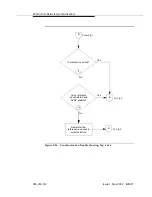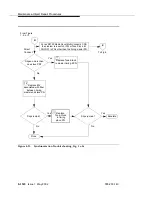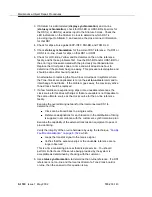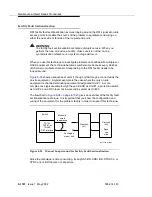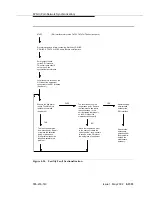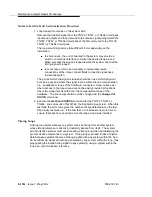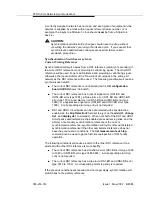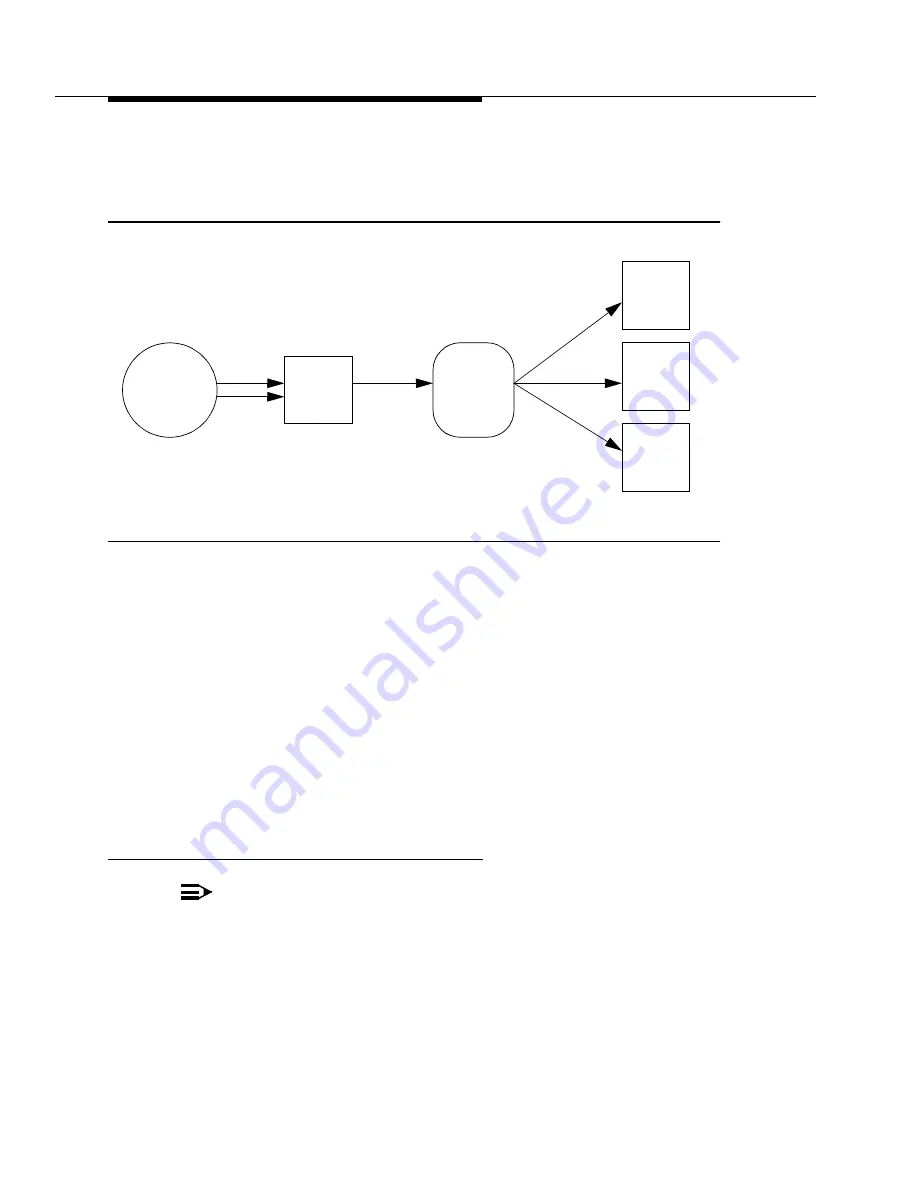
Maintenance-Object Repair Procedures
555-233-143
8-1510
Issue 1 May 2002
This creates a hierarchy where the master EPN receives timing from the public
network, and every other EPN derives its timing from the master through the CSS.
See
Figure 8-86.
Traditional Sync Operation
Typically, a pair of interfaces from the public network are configured — one as a
primary and one as a secondary. The IPSI/Tone-Clock in the Master PN can:
■
Lock onto either interface
■
Switch between them in the event of a failure
In the event of a dual failure, the Tone-Clock in the master PN can generate its
own timing and keep every PN synchronized. However, these PNs would not be
synchronized with any other public-network interfaces that exist in any of the PNs.
When a center stage is implemented via an ATM network, it is possible to obtain
timing from the ATM network. For more information, See
Synchronization)’’ on page 8-264
.
Clock Synchronization
NOTE:
Stratum-3 clocking is not available for an EPN where the Tone-Clock
function is supplied by either a:
■
TN2312 IPSI circuit pack’s Tone-Clock circuit
■
TN2182 Tone-Clock circuit pack
This section discusses synchronization with Stratum-3 and -4 clocking devices.
Master
PN
Center
Stage
Switch
Slave
PN
Slave
PN
Slave
PN
Public
Network
Primary
Secondary
Summary of Contents for S8700 Series
Page 50: ...Maintenance Architecture 555 233 143 1 26 Issue 1 May 2002 ...
Page 74: ...Initialization and Recovery 555 233 143 3 12 Issue 1 May 2002 ...
Page 186: ...Alarms Errors and Troubleshooting 555 233 143 4 112 Issue 1 May 2002 ...
Page 232: ...Additional Maintenance Procedures 555 233 143 5 46 Issue 1 May 2002 ...
Page 635: ...status psa Issue 1 May 2002 7 379 555 233 143 status psa See status tti on page 7 406 ...
Page 722: ...Maintenance Commands 555 233 143 7 466 Issue 1 May 2002 ...






















